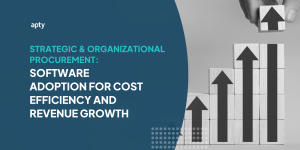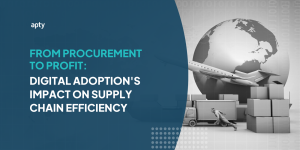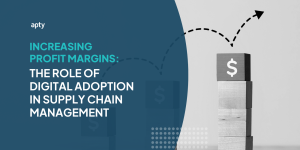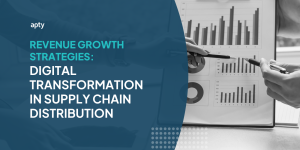Global commerce relies heavily on the intricate matrix known as supply chain procurement. It’s witnessed various transformations throughout its evolution — from manual, paper-driven processes to digitalized, streamlined operations. Yet, the most pronounced shift has been observed in integrating digital adoption into supply chain procurement.
Nike, a global sportswear behemoth, faced significant supply chain disruptions due to a mismatch between supply and demand. It wasn’t an operational inefficiency but a consequence of not adequately leveraging data analytics within their supply chain. As a result, they had excess inventory in North America but product shortages in Asia, leading to lost sales and additional storage costs.
Post this setback, Nike heavily invested in digital adoption, leveraging data analytics and AI to forecast demand better and optimize their supply chain. The result? By 2021, their gross margin expanded by 2.5 points, evidencing the power of digital adoption in supply chain efficiency.
According to a report by McKinsey, it’s revealed that companies embracing digitalization within their supply chain procurement can expect a growth of annual earnings before interest and taxes by 3.2% — the most significant increase from digitizing any business area — and a 2.3% yearly revenue increase.
Such real-world examples and compelling statistics underscore an irrefutable fact: digital adoption in supply chain procurement isn’t just a competitive advantage; it’s becoming an operational necessity.
Traditional Supply Chain Procurement: Navigating the Past
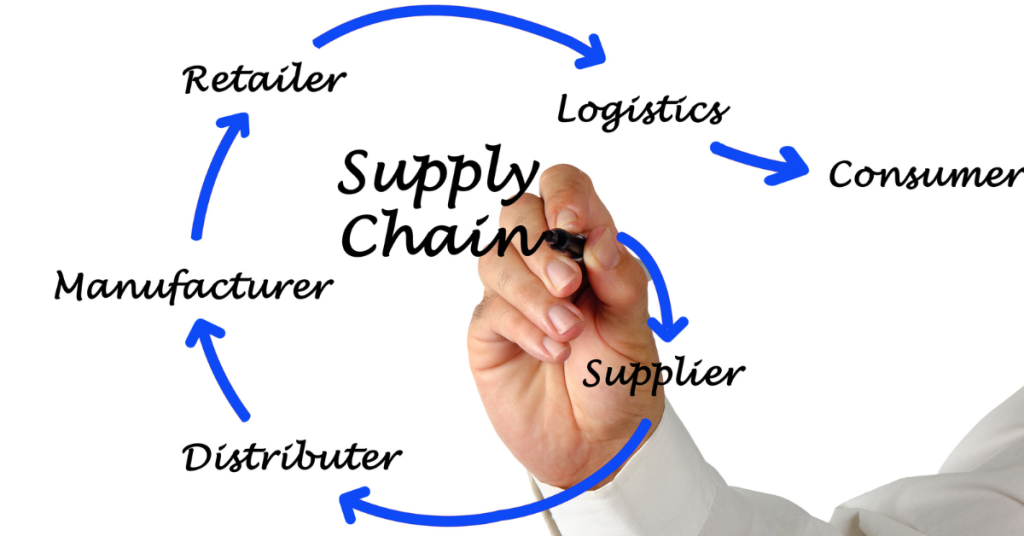
Before the advent of digital technologies and the widespread adoption of modern supply chain procurement practices, businesses relied on what we now refer to as traditional supply chain procurement. While effective in its time, this approach had distinct characteristics and challenges that set it apart from today’s more advanced methods.
Key Features of Traditional Supply Chain Procurement
Manual Processes: Traditional supply chain procurement was primarily characterized by manual processes. This involved extensive paperwork, handwritten purchase orders, and physical document handling. Procurement professionals had to manage vast amounts of paperwork, making the process labor-intensive and time-consuming.
Limited Visibility: Visibility into the supply chain was limited. Procurement professionals had a restricted view of inventory levels, supplier performance, and market trends. They relied on historical data and periodic reports, often lacking real-time accuracy.
Slower Decision-Making: Decision-making in traditional procurement was notably slower than today’s standards. Approvals, negotiations, and order processing could take days or weeks. This delay often resulted from the manual routing of documents for approvals.
Communication Challenges: Communication with suppliers primarily occurred through phone calls, faxes, or in-person meetings. This lack of real-time digital communication sometimes leads to misunderstandings, delays, and the potential for miscommunication.
Risk of Errors: Human errors were commonplace in traditional supply chain procurement. Data entry mistakes, calculation errors, and inaccuracies in order processing were risks that organizations had to contend with, potentially leading to costly consequences.
Limited Data Utilization: Traditional procurement lacks today’s advanced data analytics tools. Procurement professionals could not analyze large datasets for trends, cost-saving opportunities, or supply chain optimization.
The Evolution of Procurement
As the business landscape evolved and technology advanced, traditional supply chain procurement began to transform. The adoption of digital tools and systems led to the emergence of digital procurement, which introduced automation, real-time visibility, faster decision-making, and improved supplier collaboration in the procurement process.
Traditional supply chain procurement, while a cornerstone of many successful organizations in the past, is no longer the most efficient and competitive approach in today’s fast-paced business environment. The transition to digital procurement represents a strategic shift that addresses the limitations of the traditional model. By embracing digital adoption and modern procurement practices, supply chain managers and Chief Supply Chain Officers can position their organizations for greater efficiency, competitiveness, and profitability in the modern supply chain landscape.
Understanding Modern Supply Chain Procurement

Historically, procurement was primarily a logistical and transactional function. But today, it’s a multifaceted, strategic pillar central to an organization’s success.
Data-Driven Decisions
The forefront of modern supply chain procurement is the capacity to harness vast amounts of data. Advanced analytics platforms and Business Intelligence (BI) tools empower businesses to assimilate and interpret data in real time.
Example: Consider Amazon, a company that excels at data-driven procurement. Their system anticipates stock requirements based on historical data and current market trends, allowing them to optimize inventory levels, reduce holding costs, and ensure timely deliveries.
Impact: According to a report by The Hackett Group, companies that utilize advanced analytics in procurement report cost reductions of 8% and an improvement in efficiency by 10%.
Expanding Global Supplier Networks
Digital Outreach has ushered in platforms that connect businesses with suppliers globally. With digital marketplaces and e-procurement systems, organizations can source from a broader pool, optimizing quality and cost.
Example: Alibaba’s B2B platform has revolutionized supply chain procurement by offering a vast, global network of suppliers, providing businesses with competitive pricing and diverse product choices.
Impact: A study by Ardent Partners highlighted that organizations with advanced procurement strategies witness a 15% higher profit margin than their competitors.
Real-Time Tracking and Predictive Analysis
It’s no longer just about knowing where a shipment is. Modern systems use IoT and AI to predict potential disruptions and suggest alternative routes or strategies.
Example: Maersk, a global leader in container logistics, uses real-time data tracking to monitor its fleet and optimize routes. This reduces delivery times and minimizes fuel consumption, leading to significant cost savings and a reduced carbon footprint.
Impact: Gartner predicts that by 2023, at least 50% of large global companies will be using AI, advanced analytics, and IoT in their supply chain operation
Navigating Supply Chain Efficiency with Digital Adoption

In the dynamic world of supply chain management, where every decision and process can profoundly impact an organization’s bottom line, digital adoption has emerged as a game-changer. Digital adoption is not just about introducing new technologies; it’s about integrating them seamlessly into existing processes to maximize efficiency and effectiveness.
Digital adoption in supply chain procurement signifies a fundamental shift from these laborious methods to a more automated, data-driven, and intelligent approach. It involves harnessing the power of cutting-edge technologies such as cloud computing, artificial intelligence (AI), and the Internet of Things (IoT) to revolutionize how businesses source, acquire and manage the goods and services critical to their operations.
Key Components of Digital Adoption
- E-Procurement Systems: E-procurement systems are at the forefront of digital adoption. They enable organizations to manage the entire procurement process online, from requisitioning and supplier selection to purchase order generation and invoicing. This automation significantly reduces the time and effort required for each transaction.
- Supplier Portals: Digital adoption fosters enhanced collaboration with suppliers through online portals. Suppliers can log in to these portals for real-time updates on product availability, pricing, and delivery schedules. This transparency is invaluable in making informed procurement decisions.
- Data Analytics Tools: Digital adoption empowers supply chain professionals with advanced data analytics tools. These tools crunch vast amounts of data to provide actionable insights into procurement trends, supplier performance, and cost-saving opportunities. Data-driven decision-making becomes the norm, leading to more strategic and informed choices.
Driving Supply Chain Efficiency Through Digital Adoption
| Efficiency Pillars | Aspects of Efficiency | Key Performance Indicators (KPIs) | Impact of Digital Adoption | How a DAP Helps |
|---|---|---|---|---|
| 1. Streamlined Operations | Automated Procurement | Percentage of Orders Electronically Processed | Showcases the extent of digitalized operations. | Provides tools and interfaces for seamless automation of procurement tasks. |
| Centralized Information | Order-to-Cash Cycle Time | Indicates efficiency from start to finish due to centralized data. | Integrates various data sources, ensuring unified, real-time access for stakeholders. | |
| Error Reduction | Supplier Compliance Rate | Monitors discrepancies and alignment with digital tools. | Offers real-time monitoring and analytics to detect and correct errors. | |
| 2. Cost Efficiency | Optimal Inventory Management | Inventory Turnover | Assesses the efficiency of inventory management. | Uses predictive analytics to gauge inventory needs, reducing waste and overstocking. |
| Savings through Supplier Negotiations | Total Cost of Ownership | Offers a comprehensive view of costs, empowering better negotiations. | Facilitates transparent communication platforms for negotiation and cost analysis. | |
| Waste Reduction | Procurement Cost per Order | Pinpoints and reduces unnecessary expenditures. | Highlights inefficiencies through detailed reporting, suggesting areas of improvement. | |
| 3. Enhanced Collaboration | Inter-departmental Collaboration | Fill Rate | Ensures departmental alignment, resulting in better demand fulfillment. | Fosters a collaborative environment through shared dashboards and communication tools. |
| Vendor Collaboration | Supplier Lead Time | Evaluates efficiency of vendor communication. | Provides platforms for direct, transparent communication with vendors. | |
| Evaluates the efficiency of vendor communication. | Supplier Quality Levels | Monitors the outcome of efficient vendor collaboration in terms of product quality. | Integrates feedback mechanisms to continuously assess and improve supplier quality. |
A DAP doesn’t just facilitate digital adoption; it actively enhances each step of the process, ensuring that companies can derive the maximum benefits from their digital transformation efforts.
The Benefits of Digital Adoption in Supply Chain Procurement

Digital adoption offers a multitude of advantages, with the primary goal of boosting supply chain efficiency:
- Speed and Accuracy: Automation reduces manual data entry, minimizing errors and speeding up the procurement cycle. What once took days can now be accomplished in hours or even minutes. According to a survey by The Hackett Group, digital procurement can accelerate transaction processing by up to 30%. The survey also found that accelerating procurement digital transformation is the top priority for 45% of procurement leaders in 2023.
- Cost Savings: With automated procurement, organizations can track costs more efficiently. They can identify cost-saving opportunities through bulk purchasing, better supplier negotiations, and optimized inventory management. A study by Capgemini found that organizations implementing digital procurement solutions can achieve cost savings of up to 40%.
- Enhanced Supplier Collaboration: Real-time communication and collaboration with suppliers via online portals foster stronger relationships. This can lead to better pricing, faster response times, and improved supplier reliability. A report by McKinsey states that companies that collaborate digitally with suppliers can reduce lead times by 50% and achieve a 30% increase in supplier performance.
- Strategic Focus: By automating routine tasks, digital adoption frees procurement professionals to focus on strategic activities such as supplier relationship management, risk assessment, and innovation. A report by Deloitte found that digital adoption can free up as much as 25% of procurement professionals’ time for strategic activities.
- Data-Driven Decision-Making: Digital adoption provides access to vast amounts of data for informed decisions. According to a study by Dresner Advisory Services, 55% of organizations consider data-driven decision-making a top priority in procurement, leading to better outcomes.
- Improved Compliance: Digital procurement systems can enforce compliance with procurement policies. A report by Gartner indicates that organizations using digital procurement tools can achieve a 30% higher policy compliance rate.
- Reduced Lead Times: Automation streamlines the procurement process. The Aberdeen Group found that organizations with automated procurement processes can reduce lead times by an average of 40%.
- Enhanced Visibility: Digital adoption provides end-to-end visibility into the supply chain. A study by Accenture suggests that enhanced visibility can lead to a 30% reduction in supply chain costs.
Read More: Top 10 SCM Software for Your Enterprise
ROI of Digital Adoption in Supply Chain Procurement
In the modern business lexicon, ROI isn’t just a metric; it’s a testament to the efficacy of an investment. Digital adoption in supply chain procurement is more than a trend—it’s an investment in future-proofing operations. But like all investments, it’s crucial to quantify its returns to validate its worth. Here’s a deeper dive:
Cost Reductions through Automation
The Scenario: Manual processes, prone to human error, can lead to miscalculations, delays, and inefficiencies in procurement.
Digital Adoption’s Value: Through automation, redundant tasks are streamlined. Digital tools can perform tasks ranging from invoice processing to order tracking without human intervention, reducing errors and saving time.
Quantifying the ROI: Research from Accenture indicates that businesses incorporating automation in their procurement processes can expect cost reductions of up to 60% in certain operations.
Read More: SCM Implementation Process: 7 Steps for a Successful Implementation
Enhanced Supplier Relationships and Negotiation
The Scenario: Building and maintaining robust supplier relationships can be complex, especially without a clear overview of previous interactions, negotiations, and agreements.
Digital Adoption’s Value: Digital platforms store historical data, facilitating better negotiation strategies and fostering supplier relationships. Moreover, data analytics can offer insights into supplier performance, ensuring optimized partnerships.
Quantifying the ROI: A survey by McKinsey & Company highlighted that organizations leveraging digital platforms for supplier relationship management experienced up to a 35% faster supplier response time, leading to a more agile and responsive supply chain. Additionally, these organizations reported a 20% increase in supplier collaboration, fostering innovation and driving mutual growth.
Inventory Optimization
The Scenario: Overstocking or stockouts can be costly, resulting in additional storage costs or lost sales.
Digital Adoption’s Value: Advanced forecasting tools, driven by AI and machine learning, can predict demand with higher accuracy, ensuring optimal inventory levels.
Quantifying the ROI: According to a report by Boston Consulting Group, businesses leveraging advanced analytics for inventory management can reduce carrying costs by up to 20% while improving service levels by 10%.
Improved Compliance and Risk Management
The Scenario: Global supply chains are fraught with risks, from geopolitical issues to compliance regulations.
Digital Adoption’s Value: Digital platforms offer real-time monitoring and compliance checks, ensuring businesses always operate within legal frameworks and can quickly adapt to emerging risks.
Quantifying the ROI: Studies suggest that companies with integrated digital risk management tools reduce compliance breaches by 30% and can respond to supply chain disruptions 50% faster.
Achieving Unparalleled Supply Chain Efficiency with Apty
Amid the digital revolution, supply chains are at a crossroads — adopt or lag. But adoption alone doesn’t guarantee efficiency. Successful integration is where the true power lies. This is where Apty comes into play. As a leader in enterprise digital adoption, Apty doesn’t just facilitate software integrations; it ensures these tools are seamlessly woven into the fabric of your supply chain operations.
Guided Workflows for Seamless Integration
The Challenge: Often, even the most potent software can seem intricate. A disconnect between the software and its end-users can lead to inefficiencies and, at times, can negate the software’s benefits.
The Apty Solution: Apty provides in-app guidance, creating intuitive walkthroughs for complex supply chain software. Be it a CFO assessing metrics or a ground-level manager monitoring inventories, users can easily navigate tools, ensuring that every feature is leveraged to its fullest potential.
Data-Driven Insights for Strategic Decision Making
The Challenge: The modern supply chain is flooded with data. But raw data, in isolation, often lacks actionable insights.
The Apty Solution: Apty isn’t just about software adoption; it’s about optimizing its use. Through its analytics suite, Apty provides insights on software utilization, helping identify bottlenecks and areas of improvement. This translates to data-backed decisions in supply chain procurement and beyond.
Consistent Software Value Realization
The Challenge: Software, even if initially adopted well, can witness declining utility over time, especially with staff turnovers or software updates.
The Apty Solution: Apty’s continuous support ensures that the value derived from software isn’t a one-time event. With regular updates, on-demand support, and user analytics, businesses can ensure that their software delivers consistent value, driving “Supply Chain Procurement” efficiency.
While tools and software form the building blocks in supply chain procurement, platforms like Apty ensure the structure stands tall, robust, and efficient. By bridging the gap between powerful software and their end-users, Apty is helping businesses navigate the path from procurement to profit seamlessly and successfully.

